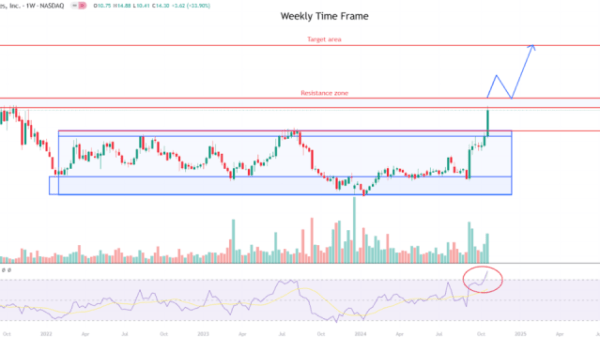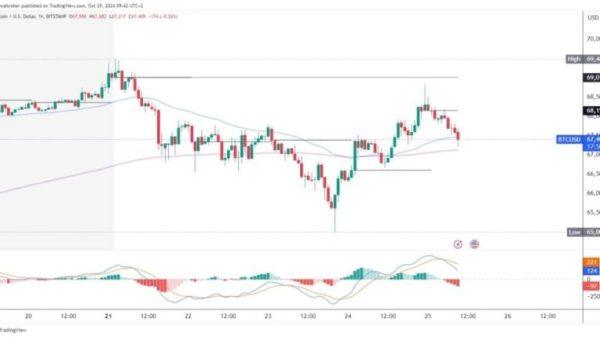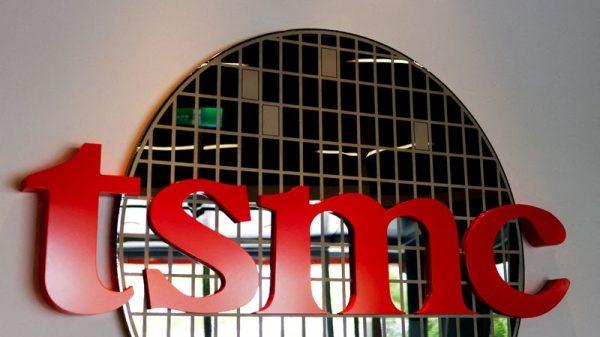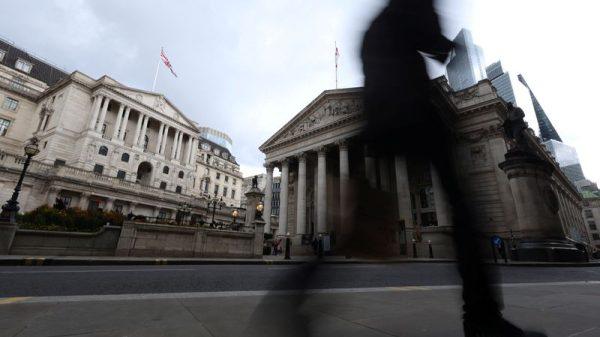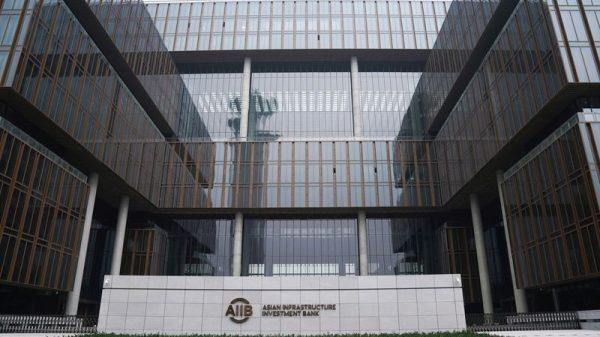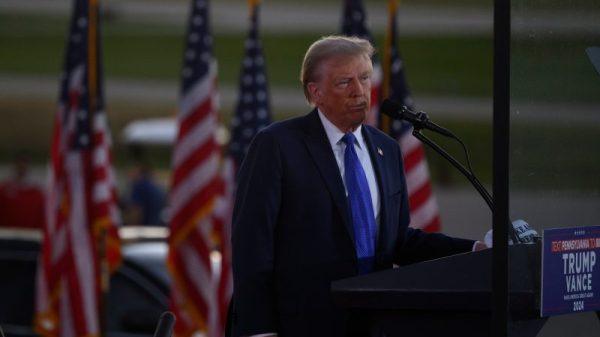By Jamie McGeever
ORLANDO, Florida (Reuters) – U.S. and European interest rates have followed parallel paths this year, even as the regions’ economic and inflationary outlooks have veered in different directions. Money markets expect this to continue. Economic logic says they’re wrong.
The amount of implied easing from the Federal Reserve, Bank of England and European Central Bank through the end of next year is almost identical, with money markets currently pricing in 135 basis points of policy easing from the Fed, 134 bps from the BoE, and 133 bps from the ECB.
True, the Fed and ECB had a modest head start on the BoE, with the latter cutting by only 25 bps so far this cycle compared to 50 bps for its two peers. And the ECB obviously had a lower starting point.
But this still doesn’t explain why markets expect all three central banks to move in lockstep through 2025.
CONSCIOUS DECOUPLING
The most dramatic divergence will likely be between the Fed’s and ECB’s respective paths. While the Fed may need to take its foot off the policy-easing pedal in the coming year, the ECB will likely need to step on it harder than markets currently expect.
The U.S. remains a global outlier given its surprisingly strong economic growth and resilient labor market. While the Fed may end up easing another 150 bps by the end of next year if inflation falls back to target, that’s a big “if”.
U.S. growth is tracking north of 3.0%, GDP forecasts are being revised upward, and the labor market refuses to crack. The risks are skewed toward a shallower rate-cutting cycle, and the Fed’s terminal rate is steadily inching up closer to 4% than 3%.
Meanwhile, aggregate euro-zone inflation is already below the ECB’s 2% target, with price gains in countries such as Ireland even below 1%. And Germany is flirting with its second consecutive annual GDP contraction – a remarkable development for the bloc’s economic powerhouse that, for many investors, overshadows stronger growth in other euro-zone countries.
FALLING R-STARS
While euro-zone money markets are currently pricing in a terminal rate of around 1.80% – well below the ECB’s current policy rate of 3.25% – economists at several global banks think the ECB will need to go further and potentially slash rates by 50 bps per meeting in the first half of next year.
“We see risks that markets might eventually price a terminal rate of marginally below 1.50%,” wrote Nomura’s European economists last week.
Economists at Morgan Stanley note that the ECB’s nominal neutral rate might even be as low as 1.0-1.4%. This factors in a 2% inflation target as well as estimates of “R-star” – the inflation-adjusted neutral rate of interest that neither slows or accelerates economic activity – between minus-60 bps and minus-100 bps.
True, the journey to a lower terminal rate might be “more of a slow burn rather than a quick pivot”, as Citi’s economists recently wrote. But the longer euro-zone inflation and growth remain below target, the more the current terminal rate pricing will look out of whack.
Across the channel, Britain’s growth and inflation dynamics aren’t nearly as weak, but it’s still something of a head-scratcher that traders think the BoE will ease by the same amount as the Fed through 2025, given how much stronger U.S. fundamentals appear to be.
Goldman Sachs analysts have run analysis of five different models of R-Star for Britain, which imply that the country’s nominal neutral rate is around 2.75% – which, like the U.S., is at least 75 bps below where traders are currently placing the terminal rate.
The upshot is policy could still be restrictive even after the easing cycle ends where traders expect it to, meaning the BoE, according to Goldman, should cut rates more.
IMPLICATIONS
If rates in the U.S. fall far less than they do in Europe, this would upend the consensus market view that the dollar will weaken in the coming year, meaning the greenback’s recent rebound has more room to run.
This wouldn’t necessarily be bad news for the euro zone. It could do with a cheaper currency. As recently as August, the euro’s trade-weighted value was at a record high, having risen more than 10% in the preceding two years.
A weakening currency could put a floor under inflation and give a boost to exports currently suffering due to the economic malaise blighting the bloc’s third-largest customer, China.
In the short term, this interest-rate synchrony may persist, as traders might be loath to change their forecasts when there is so much uncertainty surrounding the upcoming U.S. election. But once this uncertainty clears up, something has got to give.
(The opinions expressed here are those of the author, a columnist for Reuters.)
(By Jamie McGeever; Editing by Rod Nickel)

